
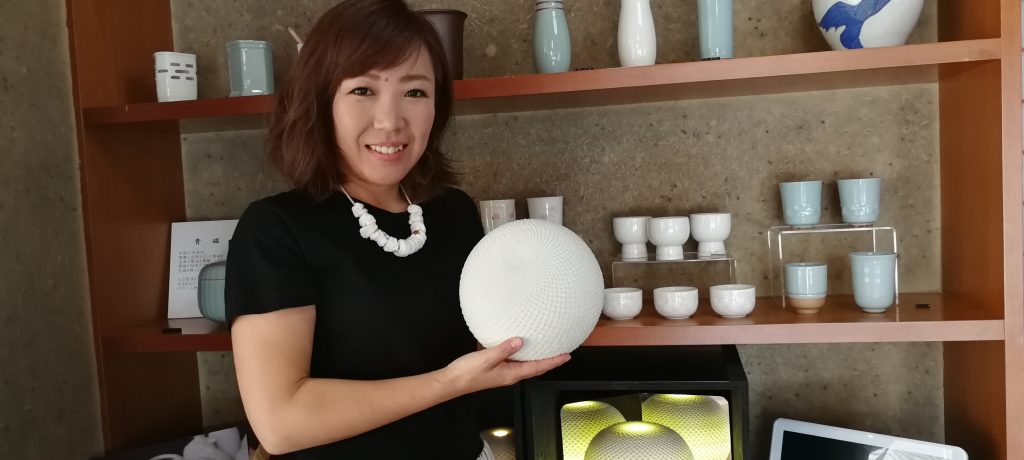
I think in most of our lives, somewhat of a search takes place to find what we really enjoy doing. In today’s blog, I feature local ceramicist Yuko Hayashi from Koson porcelain shop/workshop.
I begin asking Yuko about her formative years growing up. “When I was a child, my father was a potter and mother a textile designer (created designs for clothing). At first I had no real interest in being a either. Instead, like a lot of young girls, I thought about working at a bakery, clothing shop…” Like any other child, Yuko at first aspired to work in a job unrelated to her parents. However, a major incident changed her outlook on life. “At 12 years old, my mother passed away from illness and I starting thinking more seriously about drawing.”
At any age, losing a parent would be devastating. It seems Yuko kind of wanted to honor her mother’s memory with a pursuit in drawing. “In high school, I tried drawing but after a while I realized it wasn’t really for me.” Similar to most teenagers, Yuko and her friends were into fashion and for Yuko so much so she decided to stop drawing and once she graduated, worked at a popular clothes shop in downtown Kyoto.
While working at the shop, Yuko discovered an interest in customer service. She goes on to say, “I really loved helping customers choose their own outfits, buying clothes for myself and the young fashionable vibe.” Unfortunately, this didn’t last very long. She was notified the shop was going to close, and be moved to another location. “I was offered another position within the company but it was administration, totally different than the customer service role, I had grown to love!”
Yuko was only 20 years old at the time, feeling as if she had reached a sort of crossroads. At various points in her life, Yuko says, “while growing up, every now and then I heard family members talking about who was going to take over from my father. When I was twenty, it finally dawned on me that if I didn’t step in, the family tradition would die out.” Some may characterise this as serendipity but since Yuko is the only child, there was always the question surrounding her family as to who would continue the family business-Koson.
Yuko hadn’t made a decision to take over yet, but enrolled into a school specialized in ceramics using the potter wheel. This turned out to be a big turning point…
Koson, Yuko’s family shop/workshop has roots stretching back to her great grandfather, but regarding the actual production of its porcelain pieces, it started with her grandfather. Her grandfather worked at various restaurants, talked with other potters and ceramicists and experimented with different techniques, finally creating the white porcelain and celadon pieces Koson has become renowned for.
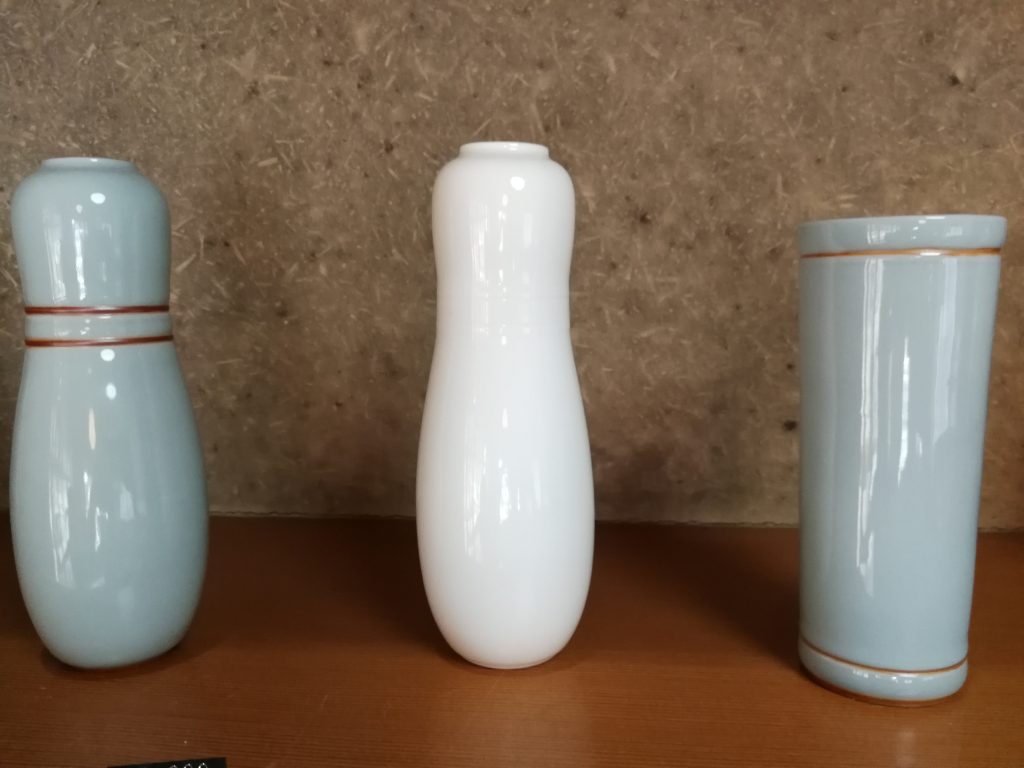
Most of the ceramicists begin at about 25 years old, but Yuko found her love of pottery early on. “I started when I was 21, first going to school, then I started to work with my father.” In the world of traditional arts & crafts, you must enter into an apprenticeship and many last for about 10 years, working long hours to absorb the wisdom, knowledge and techniques, passed down by previous generations. Yuko has been doing the same but with one big difference. She’s one of only a few female ceramicists.
In the world of traditional arts, one quickly surmises the majority of craftsmen are indeed, men. Countless generations of ceramicists have produced pieces for high-ranking lords and samurai and in modern times high-end restaurants. Inheriting the family name involves learning all of the traditional methods and techniques to continue the lineage. However, recently one question dawned on me.
Don’t you run the risk of being left behind by the natural flow of modern times and society if you rest on your laurels and produce the same traditional pieces?
In Koson’s case, the older generations appreciate the traditional white porcelain and celadon pieces but the younger generation doesn’t seem to have the same level of interest.
Interestingly enough, Yuko has managed to carve out a unique niche for herself. Approaching things from a female perspective has proved to be a benefit in this typically traditional world of ceramics. It didn’t come right away though, and being a mother of two children has also added its challenges to be sure.
On an everyday basis, Yuko produces the traditional white porcelain and celadon pieces the Koson family has built their reputation upon, and these are still popular with the older generations. However, Yuko always thought about creating her own unique style at some point.
Yuko goes on to say, “As a ceramist, doing the exact same thing gets boring and you want to challenge yourself. Also, times have changed and traditional pieces are not very functional for every-day use, so for most people it’s hard to justify spending around one hundred dollars (US) on a few cups. Especially, mothers and women like myself, who tend to purchase most of the tableware for the home.”
“I used to sit around with my girlfriends, drinking tea and talking about, well girl stuff. We drank out of Ikea mugs, cups and other tableware. It got me thinking, wouldn’t it be great if I could make porcelain pieces people could use casually, instead of expensive pieces? They would be something my friends would want to buy. Stylish, porcelain pieces with different designs and colors too!”
It took about 10 years or so but Yuko finally had that breakthrough moment. “I was constantly thinking about developing a new style but nothing came to mind. In 2016, I saw a video of a traditional sweets maker. He used a traditional sweets making technique, using scissors to cut chrysanthemum designs into the sweets. I realized the texture of the sweets was about the same as the clay when it’s soft and malleable. “
Yuko experimented on her own, using different types of scissors, eventually figuring out which scissors suited the texture of the clay. Watching different videos, Yuko gradually created her own unique style, now referred to as tsuchibasami or “Scissoring clay” and her pieces are spreading fast in popularity! She’s appeared on TV, in magazines and constantly going out to exhibitions as well.
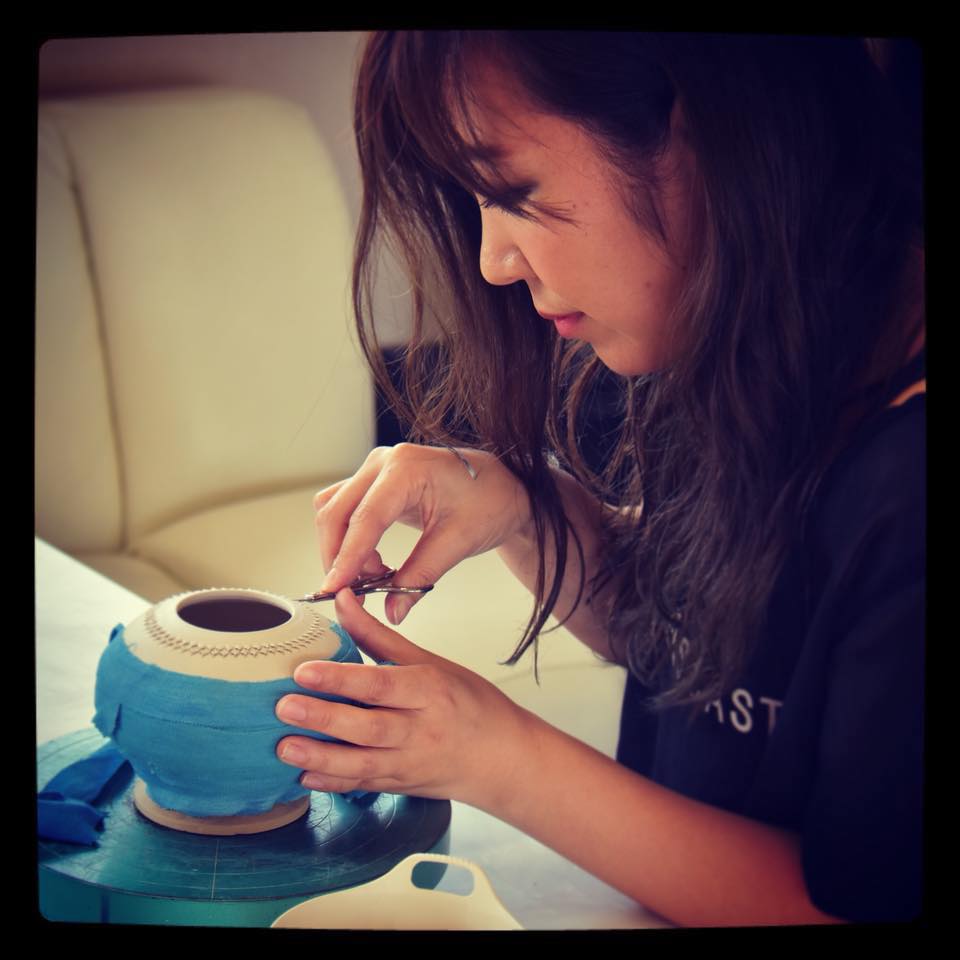
Born out of her unique perspective as a female ceramicist, Yuko uses her new tsuchibasami technique to create lights, tableware and other pieces, constantly thinking of new designs, colours and other elements to add.
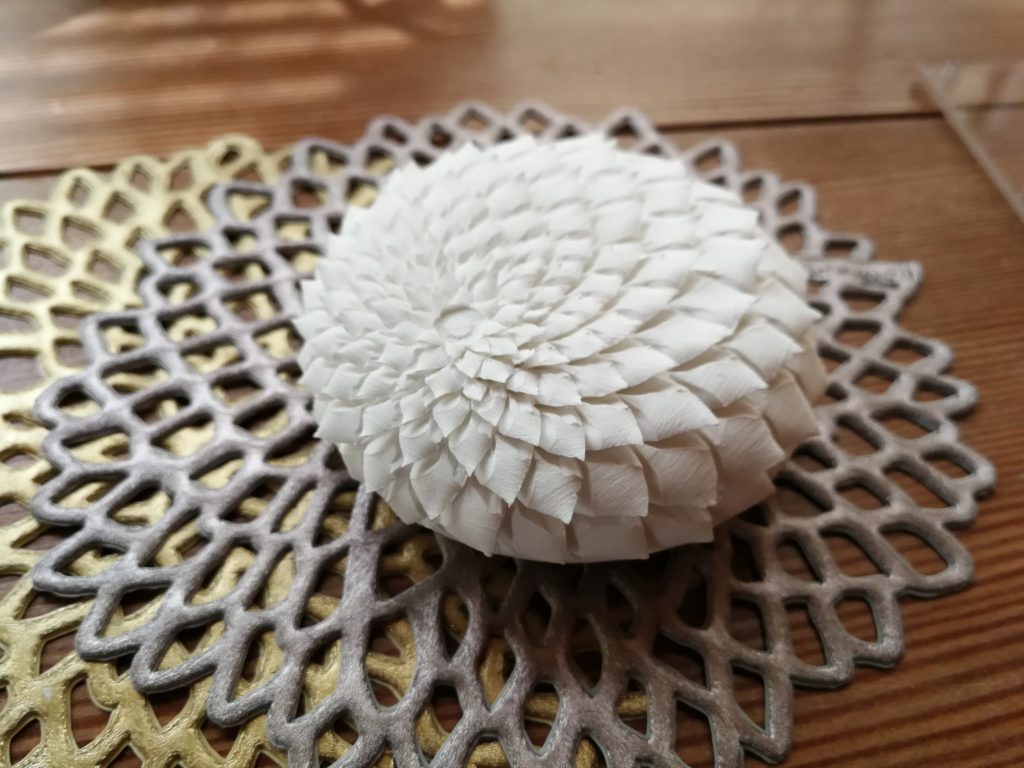
Tsuchibasami paper-weights
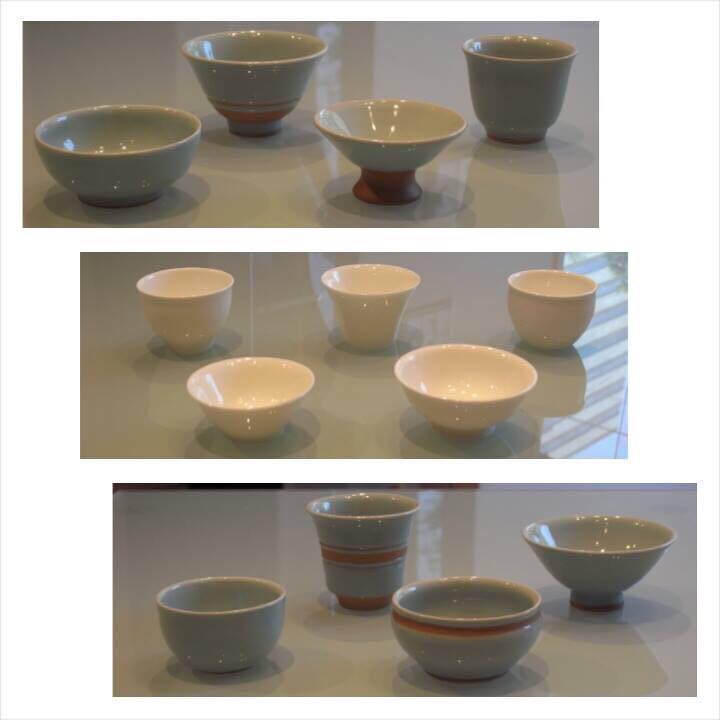
Guinomi cups
I ask her which pieces are the most popular. “For overseas visitors they tend to purchase tsuchibasami paper-weights or guinomi small cups.”
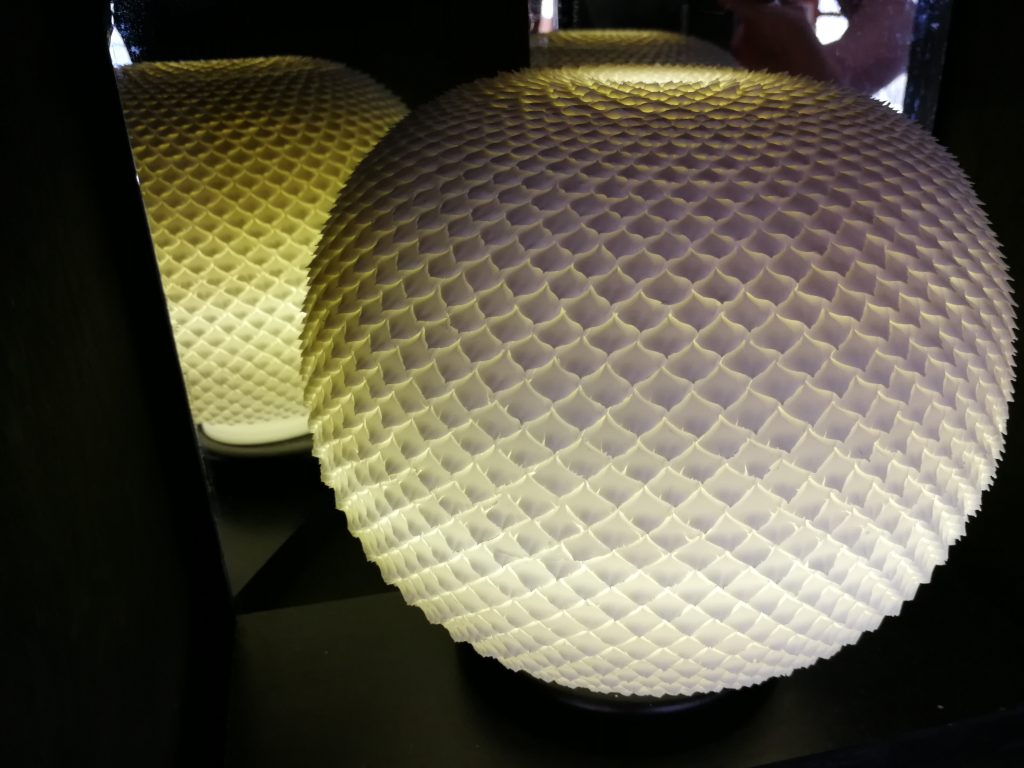
The bigger pieces such as this light, take up to 16 hours just for the cutting.
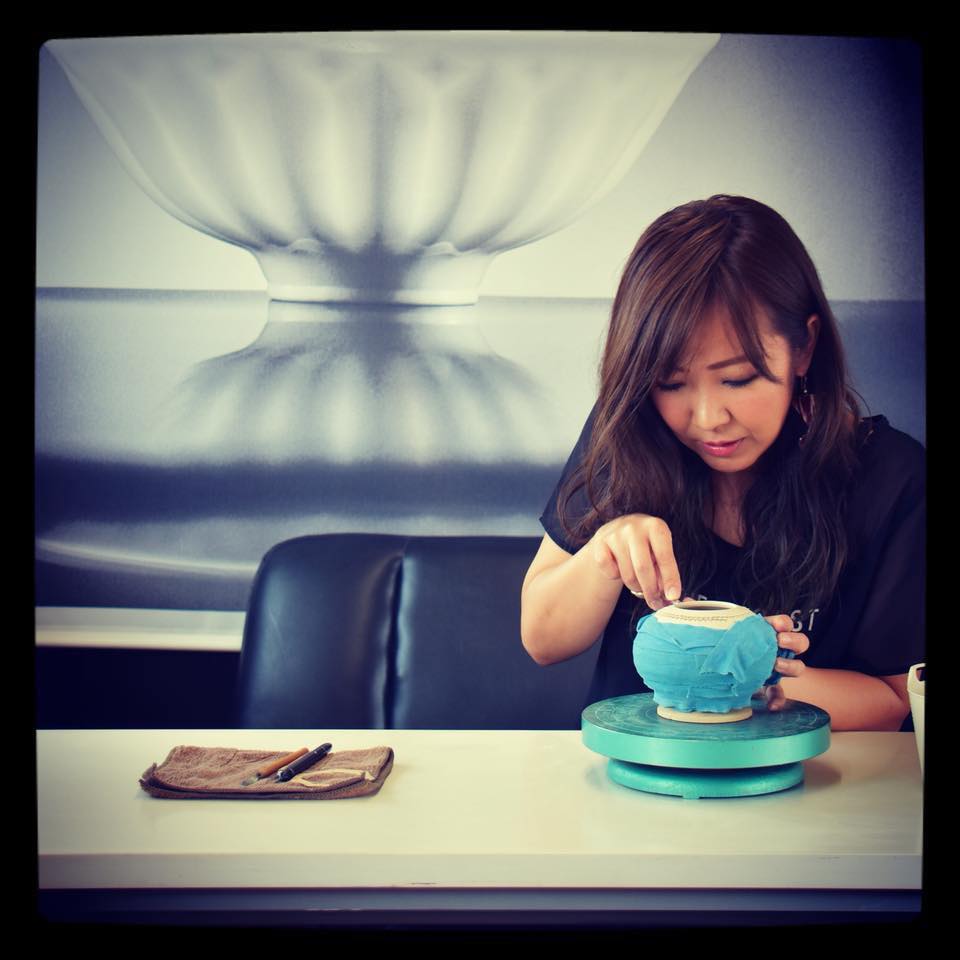
To give you and idea of what goes into the creation of these tsuchibasami pieces first, she sculpts the clay on the potter wheel into the shape of the container, then she cuts in the pattern (from start to finish, about 2 weeks).
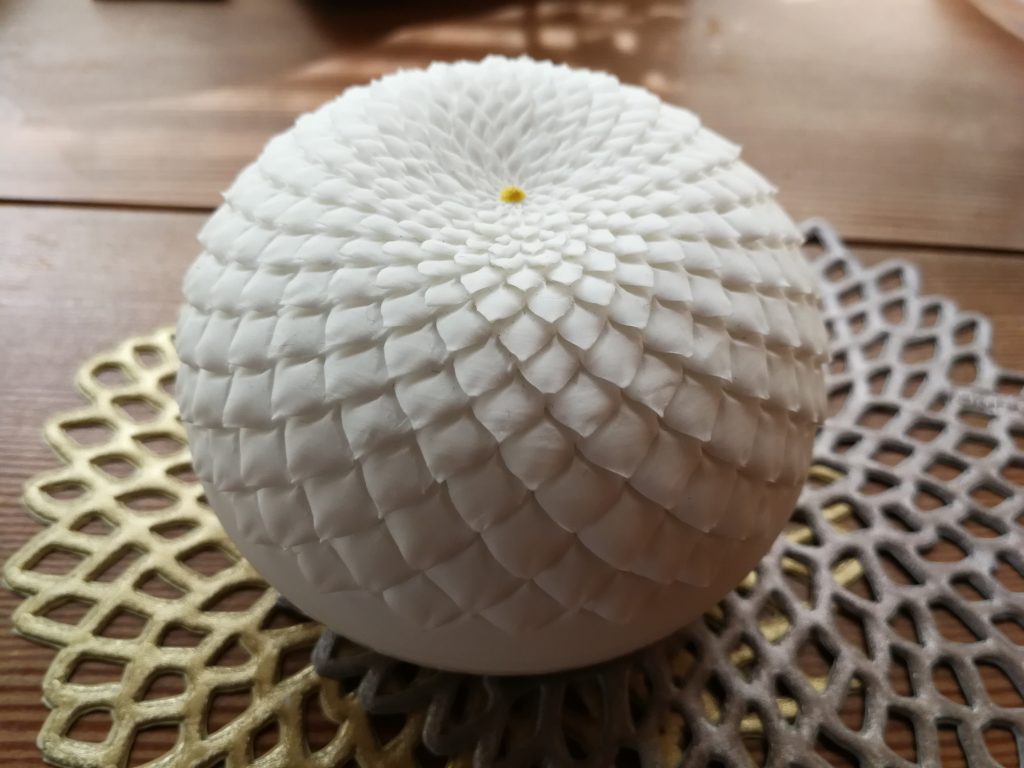
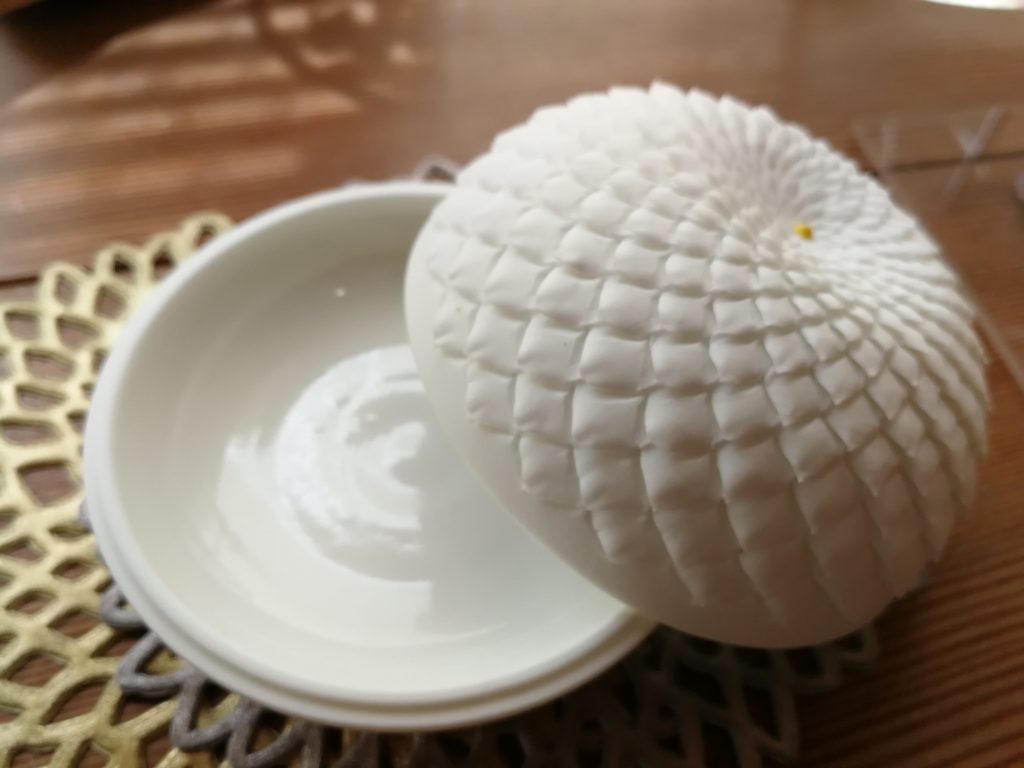
I also ask which piece she likes the most. “I like this chrysanthemum flower designed container.” It can be used as a candy container or for jewellary or anything else you would like. Since it’s porcelain, you can actually use a little water to clean the inside if it gets dirty.
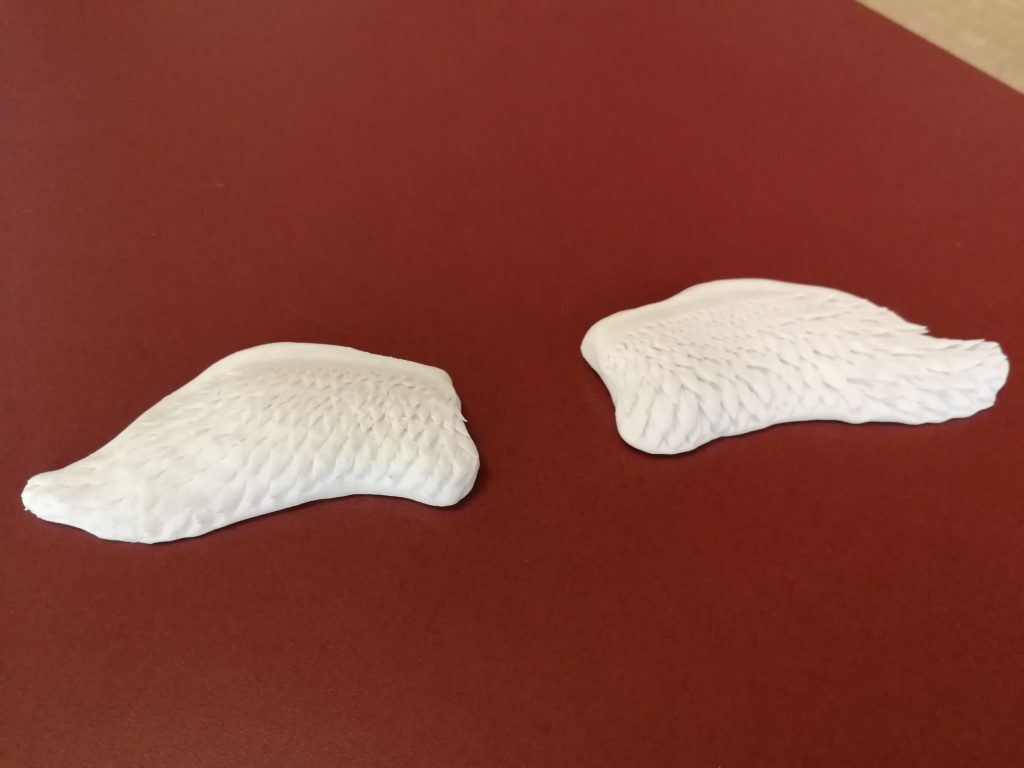
She’s always thinking of different designs, but currently she’s trying to figure out how this “angel wings” design will work in future pieces. For inspiration, Yuko looks to traditional architecture and other craftspeople like the traditional sweets maker. He actually now follows her on Instagram and came to the shop to meet her. He even surprised her and showed her a few new scissor techniques too!
In her father’s generation there were hardly any female potters but Yuko says “I feel times are changing and similar to myself there are a few families where daughters are next in line to inherit the family name. Plus, I’ve noticed a shift in the up and coming ceramicists where women out number the men. Like myself, women tend to desire casual, stylish pieces for the home and possess more of an acute sense than men in this respect. As a result, I think young female ceramicists will start to produce more affordable, yet stylish pieces for everyday home use.”
I switch gears a bit and ask how it has been for Yuko as a woman working in a male dominated world. Being a woman, of course marriage and raising a family can heavily impact your career ambitions. Yuko is a mother, raising both a son and daughter, plus producing pieces, running the shop and marketing/promotion. “Honestly, there really haven’t been many female ceramicists.” From my point of view, Yuko is a trailblazer and has had to navigate the ceramics world basically on her own. Yuko says, “I haven’t really felt any ill will towards me simply because I’m a woman.” “In an indirect way though, I have heard some criticism over my bringing in colours or designs that traditionally haven’t been accepted.” I guess with anything new, you’ll always have people who disagree.
Since there haven’t been many female ceramicists, Yuko is making it one of her priorities to start setting up support for the up and coming female ceramicists. At group exhibitions, Yuko finds herself fielding more and more questions about how she balances being a full-time mom and ceramicist. In the near future, Yuko wants to create events for female ceramicists and give them the support they need to balance home life and a vocation in ceramics.
The number of men and women interested in traditional arts and crafts has drastically been falling across all genres, not only in ceramics. From Yuko’s point of view, “I believe we have to teach the younger generation about the value of pottery. At the moment, I run a pottery workshop for kids. The amazing thing about pottery is you are kind of bonded to your piece after you personally make it. Or, at the very least, the kids learn the difficulty of making it and start to handle it with more care and realize the unique qualities of pottery.” Observing Yuko and other craftspeople like her, it appears they must negotiate between the traditions left to them by their predecessors, while simultaneously staring down an unknown future to generate new ideas and create new techniques.
Yuko continues, “I think the base of traditional arts and crafts we have been left by previous generations is important. We must respect that and allow it to exist but at the same time, I think in the category of everyday use items, we should be able to experiment and create new styles. So we must continuously create pieces with a mindset of looking a little bit into the future, searching for a new take on something.”
With the kids attending her pottery workshop, Yuko tries to challenge them with new things and peak their interest even deeper by bringing them to exhibitions. Yuko says, “The mothers of the kids tell me their children treat the pieces they make totally different.” “The mothers wash the pieces with care too!” “Both the mothers and their children develop a close relationship with the pieces and in the future hopefully buy porcelain, ceramic pieces or get involved in the world of ceramics.”
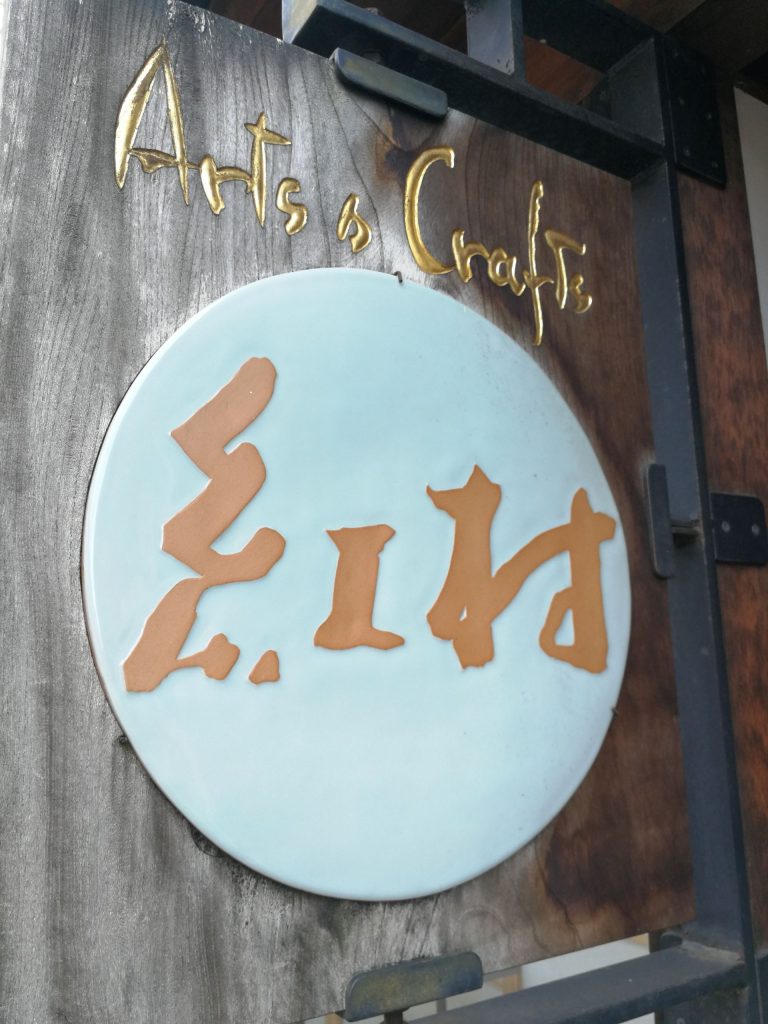
Think of me like your local friend who happens to be a professional guide. Originally from Canada, I’ve lived in Kyoto for the past 18 years, plus worked at one of the best hotels in Kyoto for 2 years. Through my interviews with locals, I hope you get a feel for Kyoto by listening to their unique stories.
If you’re interested in tours or struggling to plan your trip to Kyoto, I offer tours and/or personalised trip consultations for Kyoto and beyond. Check out my website Hands On Kyoto. I can’t wait to help you discover the hidden side of Kyoto!